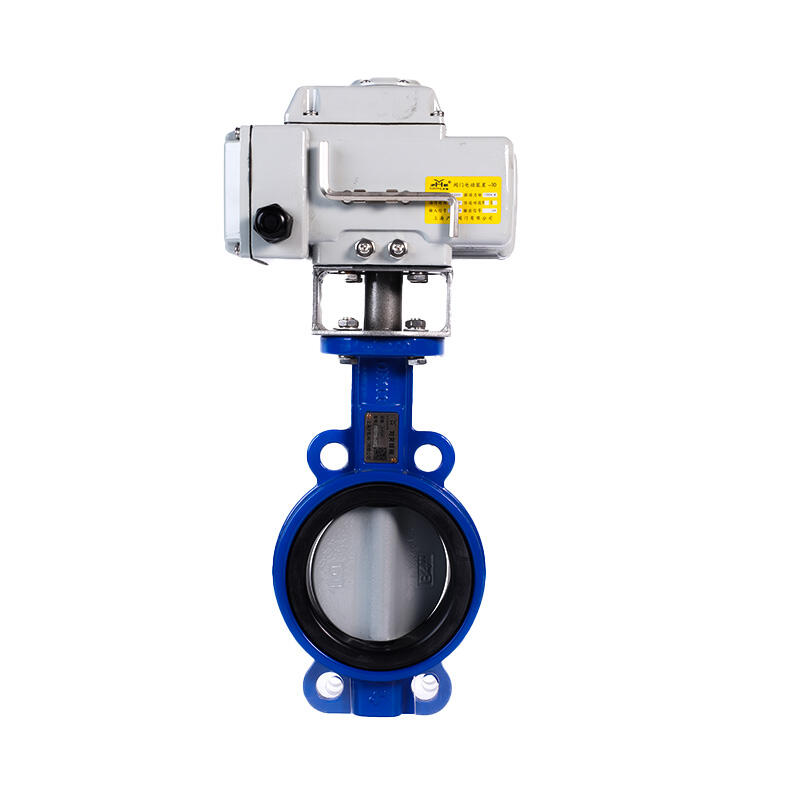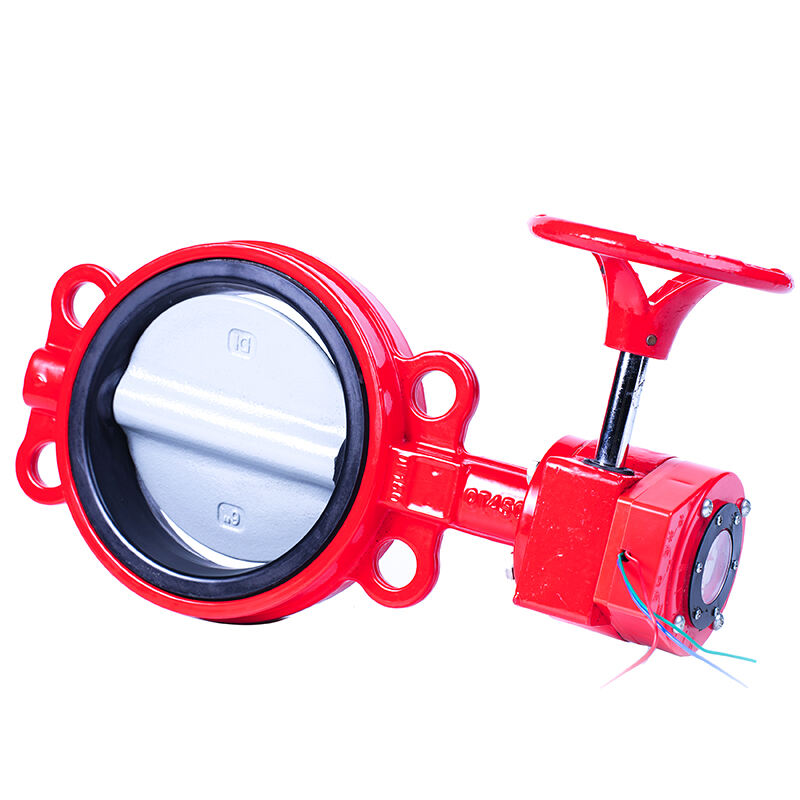Industrial flow control systems have evolved significantly over the past decade, with automation becoming the cornerstone of efficient operations. Among the various valve technologies available today, electric actuated butterfly valves stand out as versatile solutions that combine precision control with operational reliability. These advanced valve systems integrate electric actuators with butterfly valve bodies to deliver automated flow regulation across diverse industrial applications. The growing demand for process automation has positioned these valves as essential components in modern industrial facilities, offering superior performance characteristics compared to traditional manual or pneumatic alternatives.
The integration of electric actuation technology with butterfly valve design represents a significant advancement in industrial valve engineering. This combination delivers exceptional control accuracy while maintaining the inherent advantages of butterfly valve construction, including compact design and cost-effectiveness. Understanding the key benefits of these systems enables engineers and facility managers to make informed decisions when selecting flow control equipment for their specific applications.
Enhanced Control Precision and Responsiveness
Advanced Positioning Accuracy
Electric actuated butterfly valves deliver exceptional positioning accuracy that surpasses conventional manual or basic pneumatic systems. The electric actuator mechanisms incorporate sophisticated feedback systems that continuously monitor valve disc position, ensuring precise positioning within tight tolerances. This level of accuracy proves crucial in applications requiring exact flow rates or pressure differentials, such as chemical processing or water treatment facilities.
Modern electric actuators utilize advanced servo motor technology combined with high-resolution encoders to achieve positioning accuracies often within 0.1% of full scale. This precision enables operators to maintain consistent process conditions and achieve optimal system performance across varying operating scenarios. The enhanced accuracy also contributes to improved product quality and reduced waste in manufacturing processes.
Rapid Response Characteristics
The response time of electric actuated butterfly valves significantly outperforms many traditional valve actuation methods. Electric motors can initiate movement almost instantaneously upon receiving control signals, enabling rapid adjustments to changing process conditions. This quick response capability proves particularly valuable in safety shutdown scenarios or when managing rapidly fluctuating system demands.
Electric actuation systems typically achieve full stroke operation in seconds rather than minutes, depending on valve size and actuator specifications. This rapid response characteristic enhances process control stability and enables more sophisticated control strategies that rely on quick valve adjustments to maintain optimal operating conditions.
Operational Reliability and Maintenance Advantages
Reduced Maintenance Requirements
Electric actuated butterfly valves require significantly less maintenance compared to pneumatic or hydraulic alternatives. The absence of compressed air systems, hydraulic fluid circuits, and associated filtration equipment eliminates numerous potential failure points and maintenance tasks. Electric actuators contain fewer moving parts and operate in sealed environments that protect critical components from environmental contamination.
The simplified maintenance profile translates to reduced downtime and lower lifecycle costs. Routine maintenance typically involves periodic lubrication of gear trains and occasional inspection of electrical connections, tasks that can often be performed without system shutdown. This maintenance advantage becomes particularly significant in continuous process operations where unplanned downtime carries substantial economic penalties.
Enhanced Diagnostic Capabilities
Modern electric actuated butterfly valves incorporate sophisticated diagnostic features that enable proactive maintenance strategies. These systems continuously monitor actuator performance parameters, including motor current, position feedback, and operating temperature. Advanced diagnostic capabilities can detect developing issues before they result in equipment failure, enabling scheduled maintenance interventions that prevent costly unplanned outages.
The diagnostic data collected by these systems provides valuable insights into valve performance trends and operating conditions. This information enables maintenance teams to optimize service intervals, identify potential problems early, and implement condition-based maintenance programs that maximize equipment availability while minimizing maintenance costs.

Energy Efficiency and Environmental Benefits
Optimized Power Consumption
Electric actuated butterfly valves demonstrate superior energy efficiency compared to pneumatic systems that require continuous compressed air supply. Electric actuators only consume power during valve movement, maintaining position without ongoing energy input through mechanical braking or holding systems. This characteristic significantly reduces overall energy consumption, particularly in applications involving frequent valve adjustments.
The energy efficiency advantages extend beyond direct power consumption to include elimination of compressor operation and air preparation equipment. In large industrial facilities, the cumulative energy savings from replacing pneumatic valve systems with electric alternatives can result in substantial reductions in operating costs and environmental impact.
Reduced Environmental Impact
The environmental benefits of electric actuated butterfly valves encompass both direct and indirect impacts. The elimination of compressed air systems reduces energy consumption and associated carbon emissions while eliminating potential air leaks that waste compressed air. Additionally, electric systems avoid the use of hydraulic fluids that pose environmental contamination risks in case of system failures.
Electric actuation technology supports sustainability initiatives through improved process efficiency and reduced waste generation. The precise control capabilities enable optimized resource utilization and minimize off-specification product production, contributing to overall environmental performance improvements in industrial operations.
Integration and Automation Capabilities
Seamless System Integration
Electric actuated butterfly valves excel in modern automated control systems through their inherent compatibility with digital communication protocols and control networks. These valves integrate seamlessly with distributed control systems, programmable logic controllers, and supervisory control and data acquisition systems. The standardized electrical interfaces simplify installation and commissioning processes while ensuring reliable communication between valve actuators and control systems.
The digital integration capabilities enable sophisticated control strategies that leverage real-time valve position feedback and performance data. This integration supports advanced process optimization techniques and enables remote monitoring capabilities that enhance operational flexibility and reduce the need for on-site personnel in hazardous or remote locations.
Advanced Control Features
Modern electric actuated butterfly valves offer advanced control features that enhance process performance and operational safety. These features include programmable stroke limits, variable speed operation, and customizable control responses that can be tailored to specific application requirements. The flexibility of electric actuation enables implementation of complex control algorithms that optimize valve operation for varying process conditions.
Safety features integrated into electric actuation systems include fail-safe positioning, emergency shutdown capabilities, and position verification systems that ensure proper valve operation during critical situations. These safety enhancements contribute to overall plant safety and help meet stringent regulatory requirements in various industries.
Cost-Effectiveness and Economic Benefits
Lower Total Cost of Ownership
While the initial investment in electric actuated butterfly valves may exceed basic manual alternatives, the total cost of ownership typically proves more favorable over the equipment lifecycle. The reduced maintenance requirements, energy efficiency benefits, and enhanced reliability contribute to lower operating costs that offset the initial investment premium. Additionally, the improved process control capabilities can generate productivity improvements that provide additional economic benefits.
The economic advantages become more pronounced in applications requiring frequent valve operation or precise control. The durability and reliability of electric actuation systems result in extended service life and reduced replacement costs compared to alternative technologies that may require more frequent maintenance or replacement.
Operational Efficiency Improvements
Electric actuated butterfly valves contribute to operational efficiency through improved process control, reduced manual intervention requirements, and enhanced system automation capabilities. These improvements translate to reduced labor costs, improved product quality, and increased production throughput. The ability to implement sophisticated control strategies enables process optimization that maximizes resource utilization and minimizes waste generation.
The operational benefits extend to improved safety performance through reduced manual valve operation requirements and enhanced emergency shutdown capabilities. These safety improvements can result in reduced insurance costs and regulatory compliance expenses while protecting personnel and equipment from potential hazards associated with manual valve operation in challenging environments.
FAQ
What are the main advantages of electric actuated butterfly valves over manual valves
Electric actuated butterfly valves offer significant advantages over manual alternatives, including precise positioning control, remote operation capabilities, and integration with automated control systems. They eliminate the need for manual labor in valve operation, particularly beneficial in hazardous or difficult-to-access locations. The electric actuation provides consistent operation regardless of operator availability and enables automated responses to changing process conditions, improving overall system reliability and safety.
How do electric actuated butterfly valves compare to pneumatic alternatives
Electric actuated butterfly valves typically provide better positioning accuracy, lower maintenance requirements, and superior energy efficiency compared to pneumatic systems. They eliminate the need for compressed air infrastructure and associated equipment, reducing installation complexity and ongoing maintenance costs. Electric systems also offer better diagnostic capabilities and more precise control, making them ideal for applications requiring exact flow control or frequent position adjustments.
What industries benefit most from electric actuated butterfly valves
Industries that benefit most from electric actuated butterfly valves include water and wastewater treatment, chemical processing, power generation, HVAC systems, and food and beverage processing. These applications typically require precise flow control, automated operation, and reliable performance in demanding environments. The valves are particularly valuable in processes where contamination risks must be minimized and where precise control directly impacts product quality or operational efficiency.
What factors should be considered when selecting electric actuated butterfly valves
Key selection factors include valve size requirements, pressure and temperature ratings, material compatibility with process media, and required control accuracy. Electrical specifications such as voltage requirements, communication protocols, and environmental ratings must match system capabilities and installation conditions. Additionally, consider fail-safe requirements, maintenance accessibility, and integration needs with existing control systems to ensure optimal performance and reliable operation throughout the valve's service life.
Table of Contents
- Enhanced Control Precision and Responsiveness
- Operational Reliability and Maintenance Advantages
- Energy Efficiency and Environmental Benefits
- Integration and Automation Capabilities
- Cost-Effectiveness and Economic Benefits
-
FAQ
- What are the main advantages of electric actuated butterfly valves over manual valves
- How do electric actuated butterfly valves compare to pneumatic alternatives
- What industries benefit most from electric actuated butterfly valves
- What factors should be considered when selecting electric actuated butterfly valves

